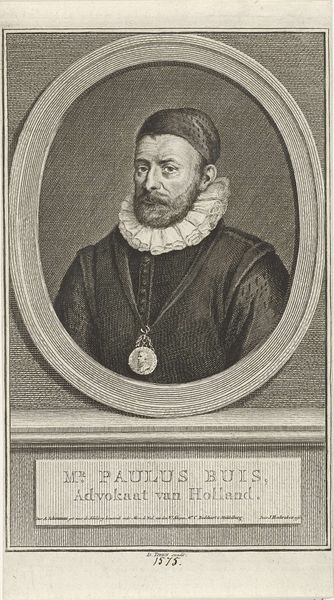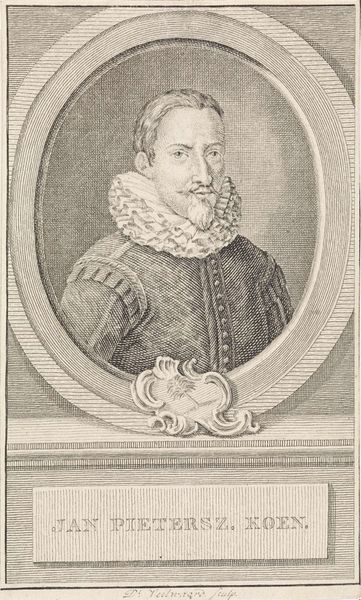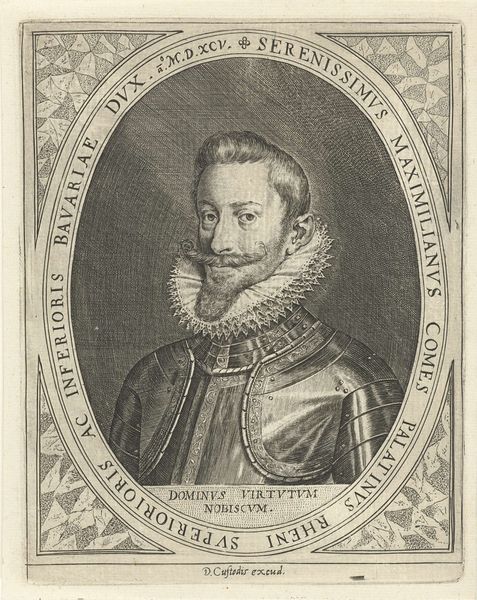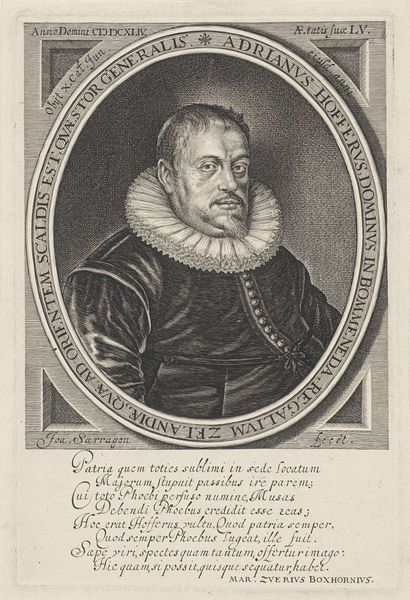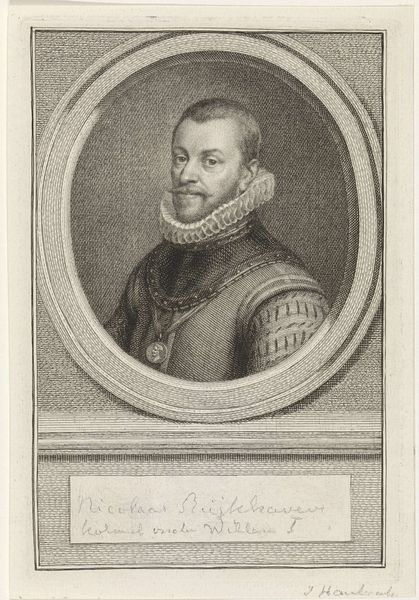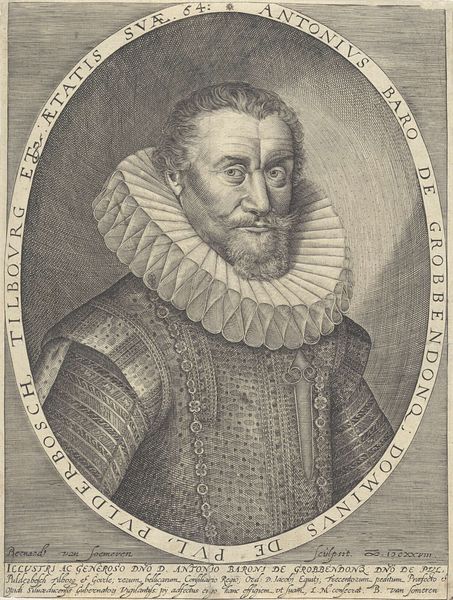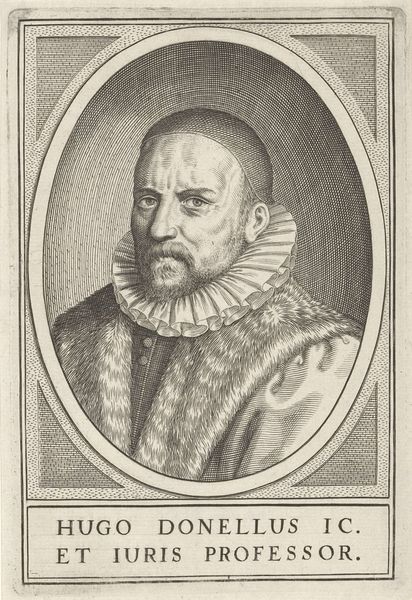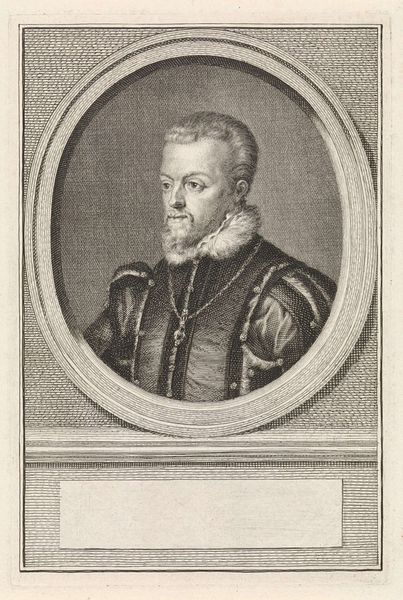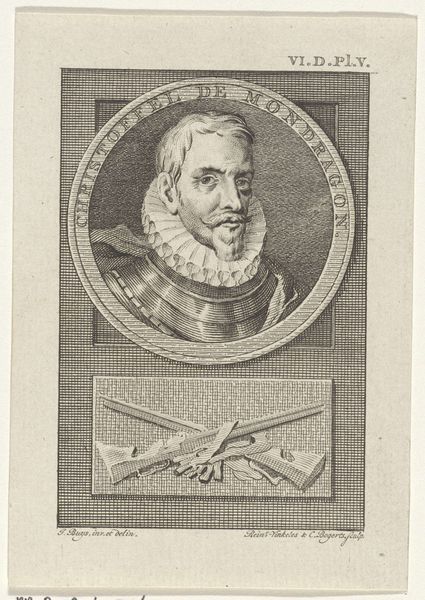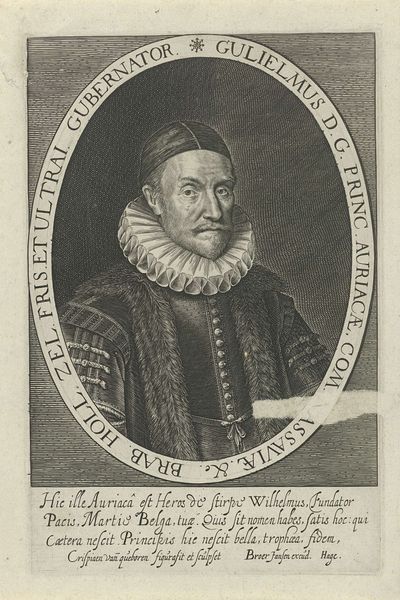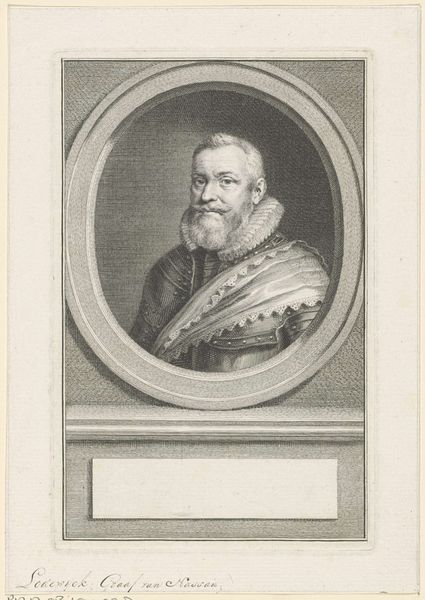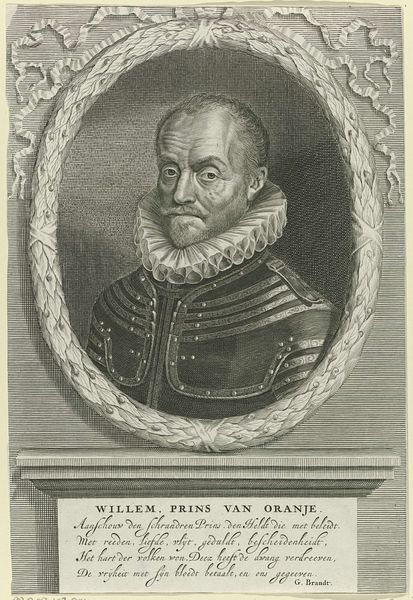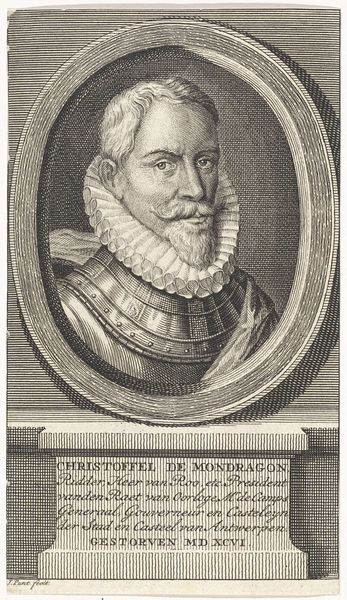
Dimensions: height 185 mm, width 115 mm
Copyright: Rijks Museum: Open Domain
This engraving of Johan Strick, made by Daniël Vrijdag, is a masterclass in the art of line. Here, the artist used a technique where thin lines are cut into a metal plate, in this case copper, which is then inked and printed onto paper. Notice how Vrijdag varies the density of the lines to create areas of light and shadow, a skillful technique requiring enormous control of the burin. But consider also the social context embedded in this print. Engravings like these were crucial for disseminating images and information in the 18th century. They made portraiture more widely accessible, beyond the realm of unique painted commissions. This print offered a relatively affordable way to broadcast Strick’s image, reinforcing his status and identity, and demonstrating the growing power of the printed image in shaping public perception. Looking closely at materials, making, and context helps us understand this print's cultural significance. It prompts us to question the conventional hierarchies between fine art and what we might call visual communication today.
Comments
No comments
Be the first to comment and join the conversation on the ultimate creative platform.
